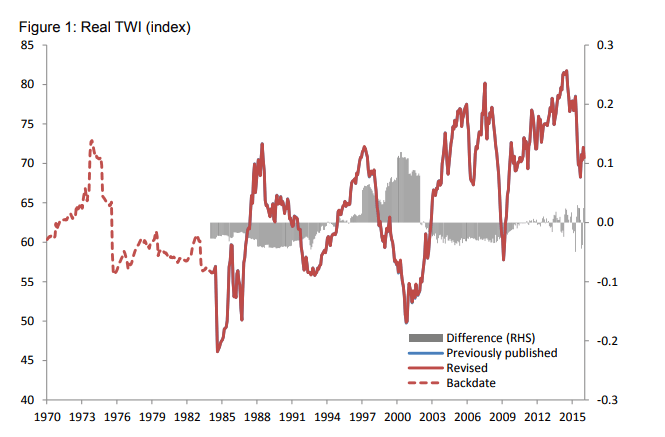
Greetings from the inclusive money crowd 💸
I’m about to go on stage at the All Raise conference, the annual gathering of professional women, many of whom are venture investors, who believe the world would be better if women—actually, anyone from an underrepresented population—got funding for their groundbreaking business ideas.
While the session is off the record (relax, I have an idea for later…), you should know about a new report out from Pitchbook and All Raise that found the number of VC-backed women has increased every year. In 2018, female-led startups received around 3,477 VC investments, totaling $46.3 billion in capital—and 2019 is expected to show similar progress.
Companies with women at the helm also have a noticeable impact on exit potential, says the report: “2018 was also the fourth consecutive year with at least 200 exits from female-founded companies, which have slowly gained market share over the past 10 years, with 14% of total exit count in 2018.”
And you might be interested in knowing that, according to the report, these sectors have the most VC-backed startups with female CEOs so far this year: pharma and biotech at 14.7%. The locations: Los Angeles, at 17.1%.
I’ll be back tomorrow with recommendations for podcasts on race and history, crowd-sourced from you.
Contents
On Point
Stephen Miller is a real racist and it matters It’s tempting to read even cursory reports of the emails reportedly sent by the would-be presidential adviser and shrug: We sort of knew this, right? But the evidence is important. The emails, sent between Miller and Breitbart News in 2015 and 2016, have been evaluated by the Hatewatch blog and published by the Southern Poverty Law Center (SPLC). Miller shares white supremacist material, embraced racist immigration stories, and lamented the loss of Confederate symbols. “The emails…showcase the extremist, anti-immigrant ideology that undergirds the policies he has helped create as an architect of Donald Trump’s presidency,” says SPLC’s Michael Edison Hayden. As numbing as this news may be, at some point this material will be an important part of an ugly historical record. (And, it’s worth noting, that Breitbart News is considered a trusted source by Facebook.)
SPLC

How DACA changed California An edit team from the Los Angeles Times does a beautiful job telling the stories of some of the now-adults who came to the U.S. as children with uncertain immigration statuses. California has the largest population of Dreamers, as DACA recipients are often called. And despite federal stats that say that 7.8% have arrest records (typically for driving or immigration-related issues), their presence has positively shaped a generation. “DACA recipients have pursued degrees at top universities, created jobs as entrepreneurs, launched nonprofits, joined politics, even appeared in Hollywood movies,” they write.
A custody battle over a seven-year-old trans girl becomes a political wedge issue This is a wrenching story about Luna Younger, 7, who wanted to wear dresses at 3, and has insisted that she was a girl since she was 5. Luna is caught in a custody battle between two parents, one of whom is respecting Luna’s gender identity and one of whom won’t. When Luna’s affirming mother was awarded full custody, it sent ripples of relief through the trans/ally community and waves of outrage among conservative community members who believe the support is a form of abuse. And now the story has become an online horror show for Luna’s mother—complete with an anti-trans disinformation campaign. Then, the custody agreement was overturned by a local judge. And that was only the beginning.
Vox
A “test case” for a higher federal minimum wage Towns near New York’s southern border, just north of Pennsylvania, offer opportunities to examine just how a $15 minimum hourly wage could impact communities, says the New York Times: While New York has been gradually lifting its minimum wage since late 2013, so that it now stands at $11.10, Pennsylvania’s remains at $7.25. “That discrepancy has created a sort of natural experiment,” writes Jeanna Smialek. According to the analysis, increased wages, while not without issues, did not result in “weaker hiring” when compared to Pennsylvania’s lower wages. It’s a trend seen across other states, says Arindrajit Dube, an economist at the University of Massachusetts Amherst, who was recently commissioned by the U.K. government to examine the impacts of the minimum wage. “Up to a point, minimum wages can be absorbed without any substantial changes in employment,” says Dube. Employers can do that, he says, by “taking a hit to profits, improving productivity, or raising prices.”
On Background
Tipped workers have twice the poverty rate of hourly workers in Chicago The math is tough no matter how you slice it. Tipped workers in the Chicago area are paid $6.40 an hour, plus tips. And 63% of them are people of color working in casual restaurants where tips are few and far between. That works out to twice the poverty rate of the rest of the workers in the region and three times across the country. The study, conducted by the University of California at Berkeley’s Food Labor Research Center along with One Fair Wage and Restaurant Opportunities Centers Unite, calls the disparity a direct result of Chicago’s “severe segregation” and a “direct legacy of slavery.”
Silicon Valley’s dismal diversity record as visualized by their company logos Matt Stempeck is a Berlin-based technologist, a former Microsoft employee, and the inventor of Gender Avenger Tally, a tool that lets you generate a pie chart that shows how many women (including women of color and trans women) were represented in a public space, such as, say, a conference panel or television show. It also assesses the amount of time women spoke compared to men. To get a sense of how powerful the graphics are, check out Stempeck’s own work, in which he takes the race and gender numbers published by tech companies and makes the reality plain to see in their logos.
[“source=fortune”]






















































